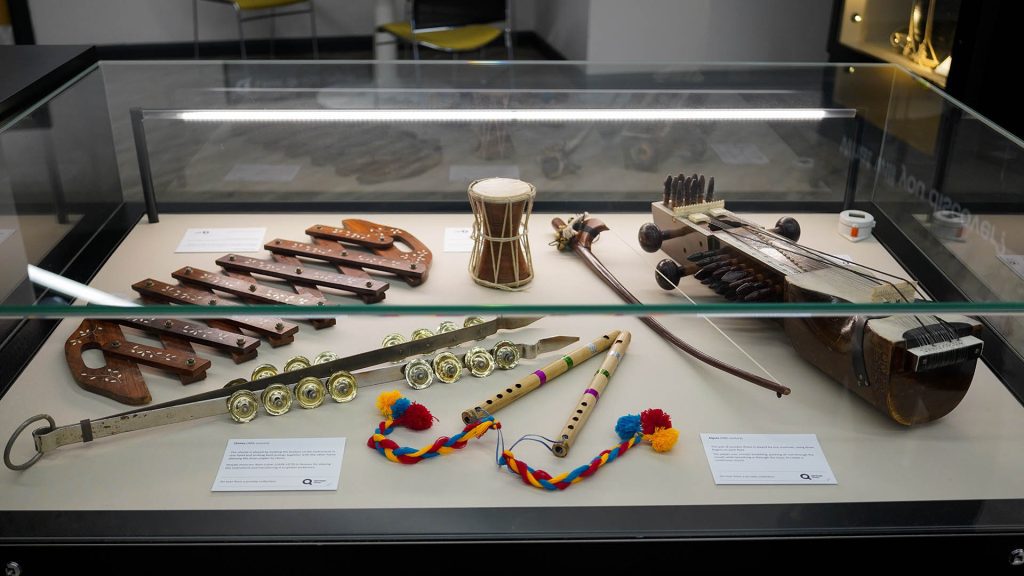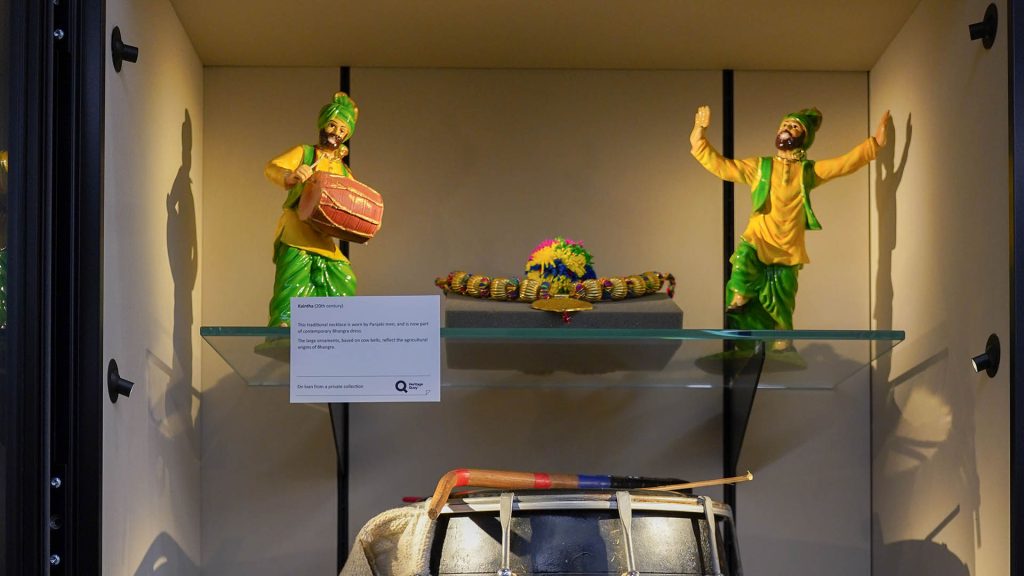The cultural significance and explosive energy of Bhangra is being celebrated at Heritage Quay at the University of Huddersfield with an exhibition that highlights the world’s first visual dictionary of the dance as an artform.
The Bhangra Lexicon is a labour of love for Hardeep Sahota, a University of Huddersfield alumni, who has catalogued over 300 movements found within Bhangra and associated sub-genres.
The Lexicon and Hardeep’s lifelong fascination with the artform are encapsulated in the exhibition, which delves into his treasure trove of Bhangra-related memorabilia including drums, recordings, ceramic figures and photos.
The exhibition is free, and runs until June 10, Monday-Friday 8am to 7pm, and Saturdays 9am to 5pm.
“I have always loved dancing, my grandad was a singer, so I grew up with music and dancing at family parties,” said Hardeep, who studied for a Masters by Research into the History of Bhangra at the university from 2010 while juggling being a teacher and a father of three.





His Masters resulted in a beautifully-produced book, Bhangra: mystics, music and migration, which expanded on Hardeep’s research.
He went on to exhibit the Bhangra Lexicon at the Yorkshire Sculpture Park, collaborating with photographer Tim Smith and creating dynamic, light-trail images that gave an almost physical form to the fleeting movements of Bhangra. He also appeared on BBC Look North and coaxed some Bhangra moves out of presenters Amy Garcia and the late Harry Gration.
“I had loads of questions about what bhangra really was, and I knew if I did a Masters it had to be in something that I really love and Bhangra was my passion,” added Hardeep.
“When I did the research, I ended up having so many more questions. Then I did the book but I did not want the knowledge just to sit on a shelf, so I went for Heritage Lottery Funding to explore Bhangra locally and in the UK to discover more about what the stories behind it were.
“Bhangra has folk roots and is sometimes looked down upon by other classical dancers, there is a hierarchy within it. But you can study it as an artform for a lifetime, physically and academically, and still not know all about it, so why should it be less than anything else? It is about raising the platform of Bhangra.
“The visuals and ephemera of the exhibition help tell a story, the same with the book and the lexicon. I created the light painting visuals to engage people to get them thinking about this fleeting moment of dance, what does it mean? Is there a meaning, or do you just sit back and appreciate the beauty of it?”
Hardeep is planning for a PhD which will delve even further, and later in 2023 he intends to devise an event where the music of Prince, a personal favourite of Hardeep’s, is reinterpreted within Bhangra.

















